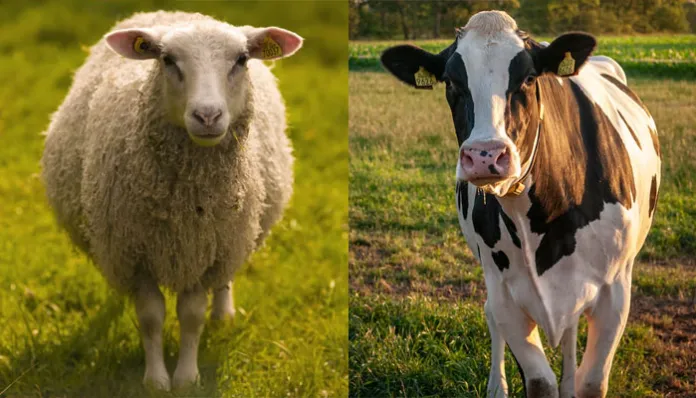If the proposal passes, New Zealand will become the first country in the world to have a tax system to charge farmers based on the level of emissions from their herds. As per reports, the payable amount will depend on the number of animals, the size of the farm, the type of fertiliser used, and any methods used that can mitigate methane production.
Cattle and sheep outnumber the New Zealand population
If we compare the number of cattle, sheep, and people in New Zealand, the country has five times as many sheep and almost twice as many cattle in the country than people. The dairy and meat industries in the country depend on these two animals. However, it is notable that they are also responsible for half of the country’s methane emissions.
There are around 6.3 million dairy cattle heads in the country. The number has increased by 82% in the last 20 years. There are around 3.8 million beef cattle, 800,000 deer, and 26.8 million heads of sheep in the country. The current population of New Zealand is approx 5.1 million.
As per 2019 stats, 50% of the country’s greenhouse gas emissions come from methane and nitrous oxide. Out of this 50% of emissions, just under 90% comes from livestock. The methane these animals generate is produced due to the ruminants’ digestion and use of synthetic nitrogen fertilisers.
The proposal’s consultation launched on October 12
On October 12, a consultation was launched in the country’s parliament to discuss the proposal. It will conclude in November. The proposal suggests a levy tax not only on the methane burped or farted by the livestock but also on the nitrous oxide found in their urine. The tax may get implemented in some form by 2025.
In July this year, when the proposal first came to light, it was said that by 2025, all farms in the country would be required to track and manage their greenhouse gas emissions. They will have to pay a tax according to how much the livestock at a particular farm pumps out. To earn credits against the emissions, the farmers can plant crops to reduce carbon emissions, including trees.
As per PM Ardern, the money collected by introducing the tax in 2025 will be used for research and incentives for the farmers who are ‘struggling to reduce the methane contribution by their herds’. Furthermore, the PM argued that the tax would put the country on the best possible footing to attain carbon-neutral meat and dairy products.
Notably, PM Ardern has pledged to reduce methane emissions by 10% by 2030 and make New Zealand a carbon-neutral country by 2050.
The agriculture community objected to the proposal
PM’s proposal did not please the agriculture community. The tax was first announced in July this year, and since then, protests have been taking place opposing the proposal. Agriculture is one of the largest industries in the country and contributes to 5% of the economy. Both dairy and meat are among the country’s largest exports.
President of the Federated Farmers of New Zealand, Andrew Hoggard told Financial Times that the move by the government would affect small-town New Zealand as the farmers will be forced to sell their land to forestry companies. He said, “We didn’t sign up for this. Our plan was to keep farmers farming. Now they’ll be selling up so fast you won’t even hear the dogs barking on the back of the ute [pick-up truck] as they drive off.”
The 2003 ‘fart tax’
Notably, the first such tax was introduced in 2003, around 20 years ago, when the Helen Clark-led government approved a similar scheme. At that time, it was dubbed a ‘fart tax’ by the opponents. The approval was withdrawn after a tractor protest comprising 400 farmers with 20 tractors outside New Zealand Parliament.
Then President of Federal Farmers Tom Lambie had said, “New Zealand farmers are completely unsubsidised, completely unprotected in a hugely distorted global market. The imposition of this unnecessary levy is just another cost we shouldn’t have to bear.”
At that time, every farmer would have ended up paying NZ$300 per year as the ‘fart tax’. In opposition, a petition gathered over 64,000 signatures, which was over half of the New Zealand farmers.










